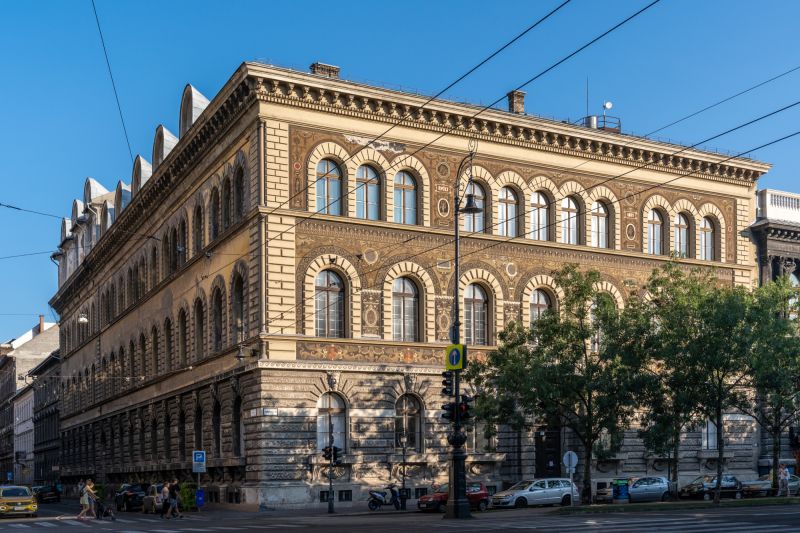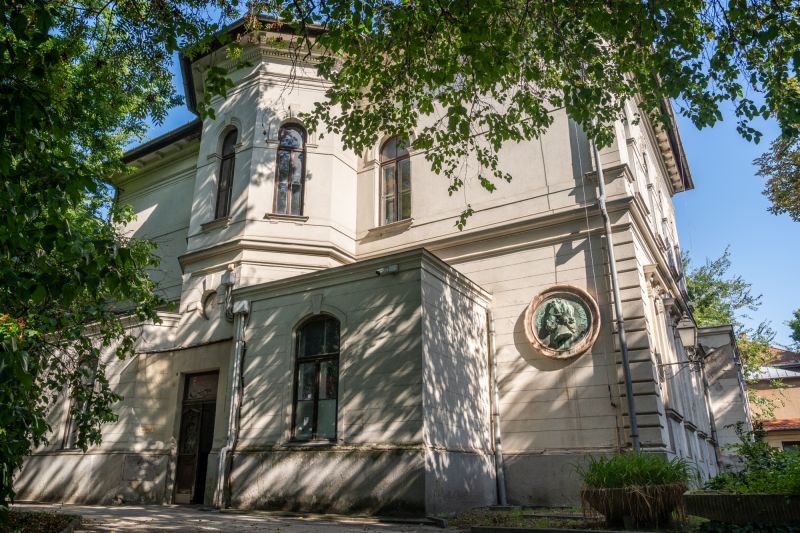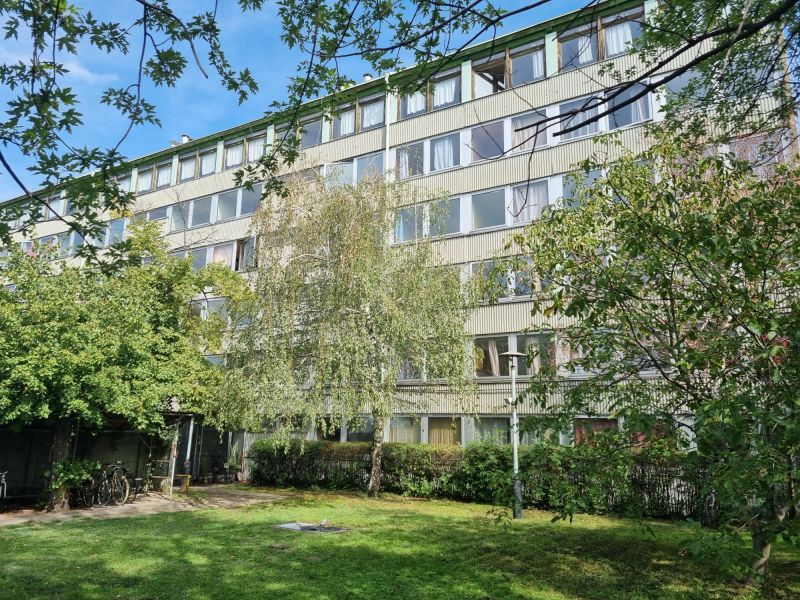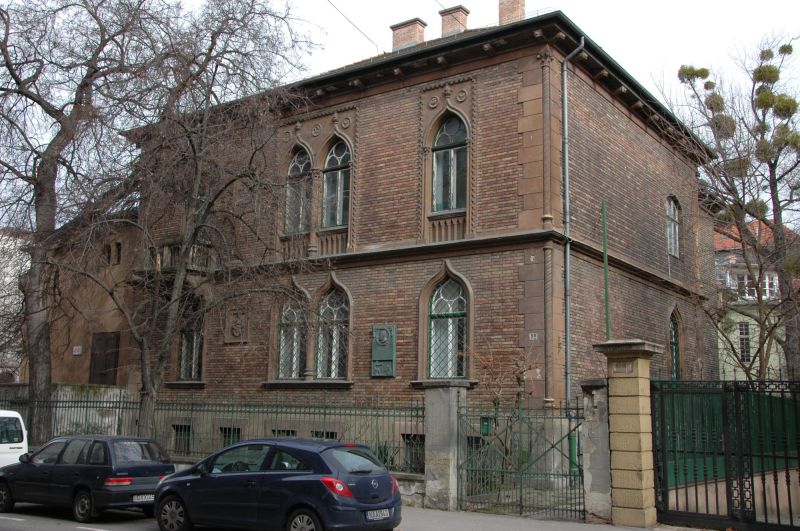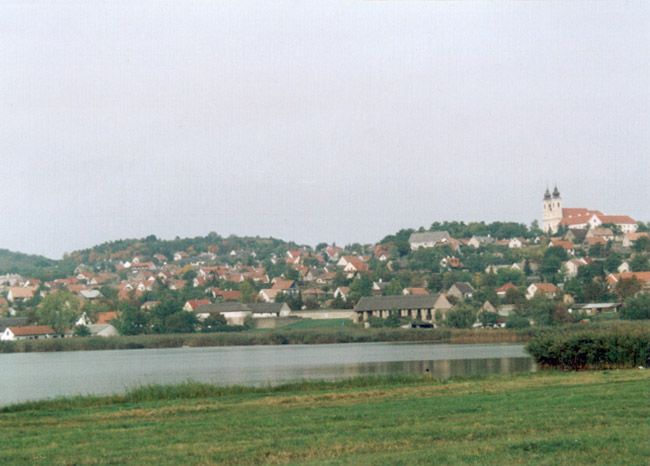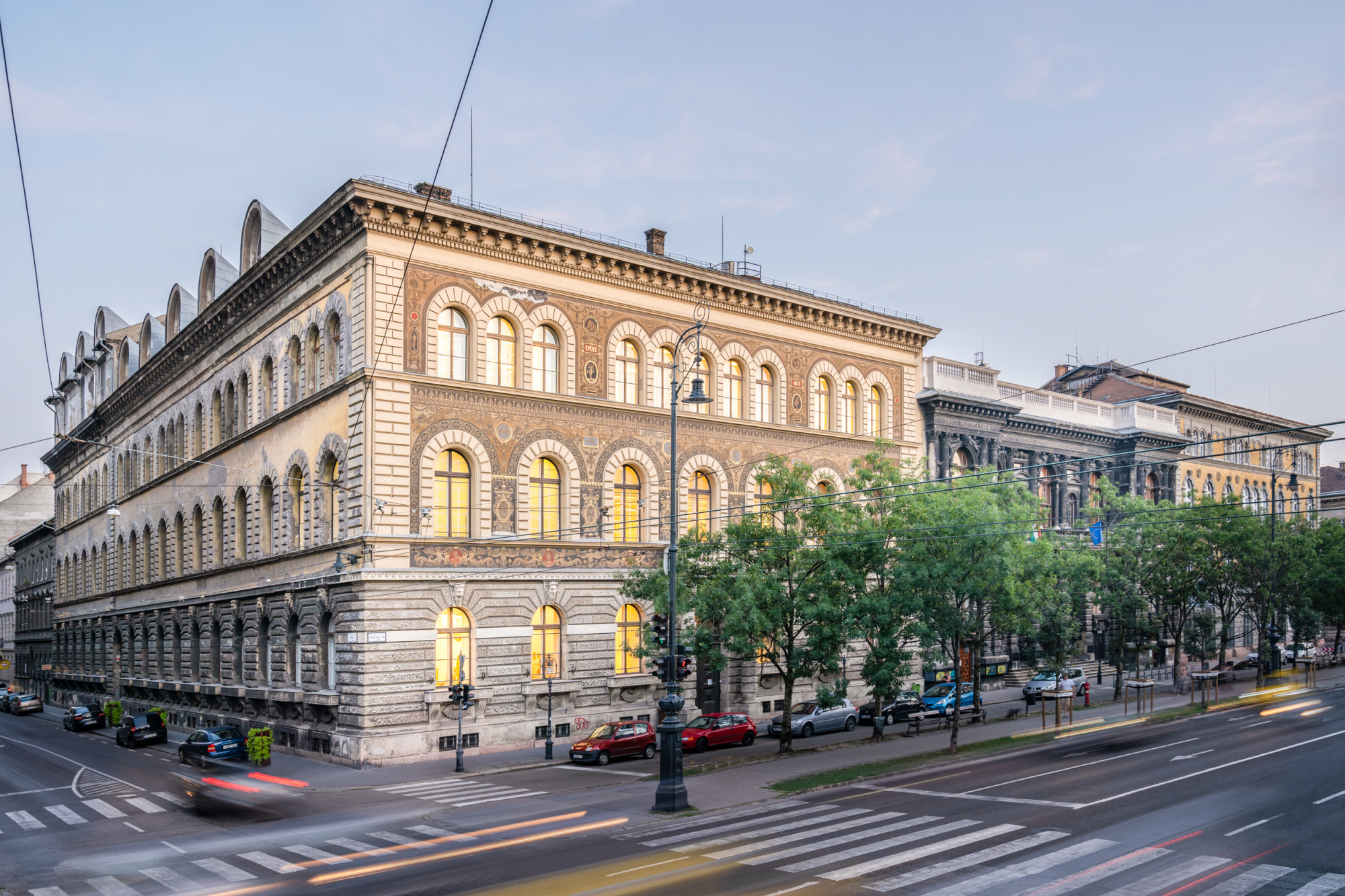
Premises of the Hungarian University of Fine Art
Main Building
1062. Andrássy út 69-71.
The ancestor of today's Hungarian University of Fine Arts, the Royal Hungarian National School of Design and Drawing was founded in 1871. Its building was designed by the Munich-educated architect Alajos Rauscher, a teacher at the School of model Drawing, on a corner plot of Andrássy út (then Sugárút), adjacent to Izabella utca. He used his experience from his previous study trips to Florence and Verona to design the Mintarajztanoda, inspired by the Italian Renaissance in his choice of decorative motifs. The interior decoration of the building was also based on his designs. In the sgraffito of the façade, designed by him, the portraits of medallions (Bramante, Michelangelo, Leonardo da Vinci, etc.) are by Bertalan Székely. Teaching began in 1876, and ten years later a new wing was added.
The Art Hall, inaugurated in 1877, was built on the adjacent site with public donations. The façade of the neo-Renaissance-style boulevard palace and the interior ornamentation of the building were designed by Adolf Láng. The staircase crowned with an oval dome and the allegorical murals in the first floor corridor are the work of Károly Lotz, a teacher at the school. The lunettes of the staircase are made up of female figures in a variety of settings, set in low-arched fields, symbolising different artistic genres (Art History, Applied Arts, Sculpture, Architecture, Drawing). On the ceiling of the first-floor corridor, the female personifications of Harmony, Beauty, Reality and Imagination are displayed in an octagonal field, each accompanied by geniuses and mischievous puttosi, in a Renaissance ornamental frame. The ceiling stuccoes here, as in the ornate rooms on the first floor, are the work of the architect Napoleon Kéler. The stained glass windows were designed by Zsigmond Róth.
The history of the Mintarajztanoda, which from 1897 became the Mintarajziskola and from 1908 the Royal Hungarian Academy of Fine Arts, and the adjacent Art Hal are intertwined: the teachers of the school were also the exhibiting artists of the Kunsthalle, and it was here that they held their first exhibition in the capital in 1897. In 1896, in connection with the Hungarian Millenium celebrations, an exhibition palace was built in the City Park, which was named the Art Hall. The building on Andrássy Avenue was renamed the Old Art Hall. The two adjacent buildings were later merged, and since then the Old Art Hall has been part of the University of Fine Arts, including the Barcsay Exhibition Hall, the Rector's Office and the Registrar’s Office. The Old Art Hall’s rooml with a decorative ceiling built for the Board of the Society of Fine Arts, is now the Board Room of the Hungarian University of Fine Arts.
In 1997-98, thanks to restoration work on the main building of the Hungarian University of Fine Arts, the façade, the Rector's corridor and many of the interior decorations of the building, built in the last century, were restored to their original beauty.
MKE épületei - Főépület
Epreskert
1063. Budapest Kmety Gy. u. 26-28.
The urban Epreskert (Mulberry Garden) takes its name from the Mulberryberry Grove located here. In the last century, a school of painting was opened on the site under the leadership of Gyula Benczúr, followed five years later in 1887 by the painting school of Károly Lotz and the sculpture school of Alajos Stróbl. The first building was erected in 1884 as the studio house of Gyula Benczúr, followed by the studios of Lotz and Stróbl.
These buildings are still standing, with some alterations, and are still used as studios.
From 1921, the master schools and studios in Epreskert were merged into the Royal Hungarian Academy of Fine Arts. In the last century, the substructure of the former Józsefváros Calvary (1744-1749) was brought to Epreskert, which is now an exhibition space for the works of the students of the college. During the year, it is the venue for individual and thematic group exhibitions, and at the end of the academic year, it offers the opportunity to exhibit diploma theses.
In addition to the studios of the Painting, Sculpture and Visual Design Departments, the Epreskert also houses workshops for students in metal, bronze casting, stone carving, plaster and glass.
MKE épületei - Epreskert
Alajos Stróbl Halls of Residence
1087 Budapest, Stróbl Alajos utca 3/A
The dormitory is located in Budapest, 8-10 minutes walk from the Stadionok metro station.
Students are accommodated in 70 double rooms on 5 floors of the dormitory. There are 140 beds, which allows for a balance of boys and girls according to the needs.
The building has 2 kitchen-dining rooms per floor, a TV lounge, a gym and a laundry-drying room on the ground floor.
An internet room on the first floor, a study room on the ground floor and wired internet connection in each of the living rooms help students with their studies and work.
Bathroom facilities - bathrooms, toilets - are available on each floor and in the standard distribution and quantity for each gender.
The building has an elevator.
The courtyard and the well-kept park of the dormitory offer students the opportunity to spend their free time in a cultured way, to relax actively and to organise social activities.
The continuous registration and security of the students, as well as the security of the building and the College premises, is ensured by a magnetic card access control system, a security camera system and a 24-hour reception.
The corridors are equipped with smoke detectors. Smoking is strictly forbidden in the whole dormitory (lift, toilets, kitchen, corridor, lounge) and in the rooms. The designated smoking area is located in the courtyard of the residence.
MKE épületei - Stróbl Alajos Kollégium
Feszty House
1063 Budapest, Bajza u. 30.
Mór Jókai the polular 19th Century romantic writer, his adopted daughter Róza Jókai and her husband, the famous painter Árpád Feszty, bought the plot of land at Bajza utca 30 in Budapest in 1890. Feszty had a villa with curved windows built on the model of Venetian palaces, and the writer made the garden homely with trees and flowers. The artist family's lively social life was organised around the splendid rooms. There was a 50 sqm study upstairs, the painter's 100 sqm studio and Mrs Feszty’s mahogany parlour. Here the first true Hungarian artists' salon was established. When the elderly writer married the 20-year-old Bella Grósz and moved away, Árpád Feszty went bankrupt and had to sell the villa.The house was bought by the Petőfi Literary Society and after several changes of ownership it became the property of the Hungarian University of Fine Arts. The building is now home to the Doctoral School.
MKE épületei - Feszty-ház
József Somogyi Art Camp
8237 Tihany, Völgy utca 49.
The Somogyi József Art Camp, registered as part of the National Cultural Heritage, is located on the northern shore of Lake Balaton, in a protected landscape area. The area, once home to Benedictine monks, has been owned by the Hungarian University of Fine Arts since 1995. Its listed buildings, the barn and the sheep shelter, built in 1830, now host exhibitions.
The Somogyi József Artists' Village - thanks to its extension and modernisation in 1997/98 - is now open to students not only during their summer programmes, but all year round. In addition to the students and teachers of the University, the Hungarian University of Fine Arts also wishes to offer a place for foreign artists and students at the Somogyi József Art Camp. The studios and exhibition spaces, the library, the computer workstations and the sports room, located in a natural and historical environment, provide a modern infrastructure for the students' practice in the art camp and for cultural and study programmes during the year, which also allows the development and expansion of partnerships between foreign art academies and institutions. In addition to the two- and four-bed rooms in the main and annex buildings, which can accommodate around 40 people (25 in winter), visitors to the art camp can choose from a "friends' house" for nine people. There is also an outdoor sports area of almost 2000m2 on the shores of the lake of Tihany.
In addition to the József Somogyi Art Camp, the university's students can also do their creative work in Villány, Csongrád, Miskolc, Siklós and at various international art camps.
